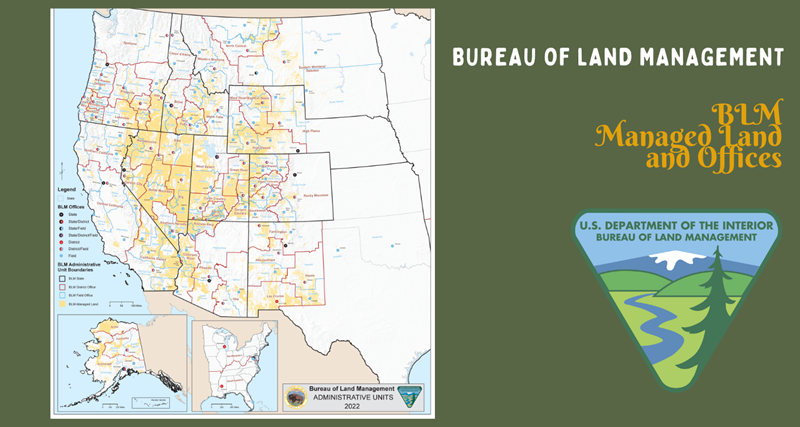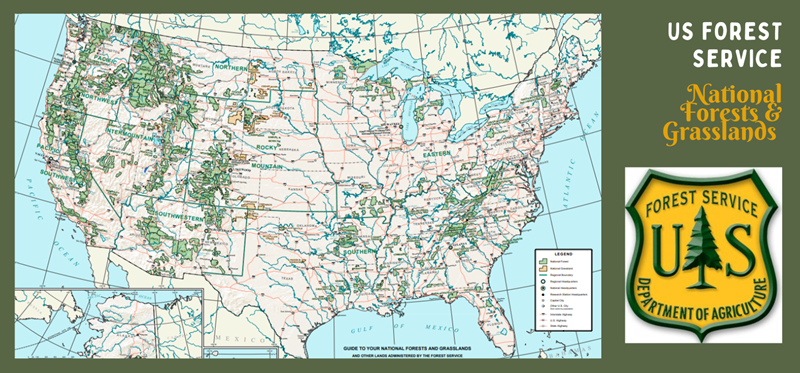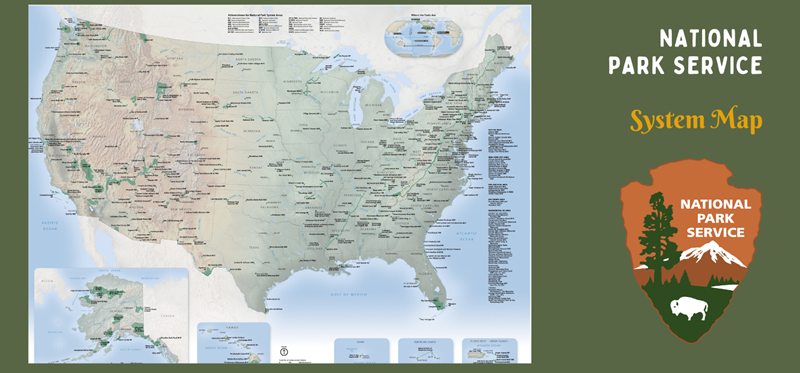By: Aaron Bannon, America Outdoors
What Does It Take to Operate on Public Lands?
Conducting a commercial operation on United States federal or state lands or waters typically requires a permit. Agencies administer the land, and it is under their purview to levy a fee for use and access and to manage facilitated recreation activities to ensure quality programs are in place.
For new outfitters seeking to establish an operation, or for established outfitters seeking to expand, access to permitting can be a formidable undertaking. Depending on the location and the agency, obtaining a recreation permit may be simple, straightforward, and affordable, or it may be cumbersome, complex and prohibitively expensive. In the past 30 years, federal agencies to varying degrees have been expanding the permitting process and review, while diminishing the budget and human resources available for administering recreation programs. Some agencies find a way. Others may require upfront payment of tens of thousands of dollars and still decline a permit application.
This article is not a comprehensive guide, but rather an introduction to various permitting regimes, primarily on federal lands, to help operators anticipate the process and culture of a permitting authority. Primary permitting authorities are private, state, Bureau of Land Management, US Forest Service, and the National Park Service, though other entities may also permit activities including municipalities, counties, the US Fish and Wildlife Service, the US Army Corps of Engineers, and others. Unfortunately, these entities don’t share a permitting system, so if you are planning to operate in these areas, you will have to get a separate permit through each agency.
Bureau of Land Management

About BLM
Public lands that were not allocated to private, local, county, tribal, state, or federal interests, come under the jurisdiction of the Bureau of Land Management. Primarily in the western U.S., BLM lands tend to be arid, desert landscapes. Some BLM landscapes have designations, such as a Wilderness or Wilderness Study Area, a Wild & Scenic River, or a National Monument. These designations typically come with a higher level of active recreation management. BLM lands generally, however, can be the most reliable, streamlined, and cost-effective option for an outfitter seeking a reliable permit in a reasonable amount of time. The BLM tends to operate much faster than the NPS and USFS in processing permits, so if you are planning to start a business in the west, this could be a good place to start.
Type of Permit
The BLM issues Special Recreation Permits, when the process is not competitive, on a first-come, first-served basis. The BLM does not have a temporary permit option, but you should be able to achieve a multi-year permit if you have a good application and business plan.
Permit Acquisition
The permit administrator may conduct a pre-application consultation with the applicant, to review the proposed activity and the resources necessary to comply with the application process. Within 30 days of a permit application, the BLM will acknowledge receipt, ask for additional information, or disapprove the request. The permitting process may take up to 180 days. Among additional resources, the applicant should be prepared to provide:
-
An operating plan
-
A business plan
-
Proof of insurance
-
Maps of proposed activities
-
Any required state or local licenses
-
Proof of experience related to the activity, and references
The permitting administrator must determine if any environmental review is necessary, which, if it is outside the scope of the BLM management plan, may extend the issuance deadline. Special Recreation Permits are issued for up to 10 years, though a new activity may initially be permitted in one-year increments. An operator should anticipate payment of three percent of gross revenues to the BLM, which will be iterated in the final permit language.
Read more.
US Forest Service

About the USFS
Upon its establishment in 1905, the US Forest Service has been an agency within the US Department of Agriculture, designating public lands across the country as “forest reserves” to provide a sustainable timber supply to the nation. In part due to this distinction, the US Forest Service has been culturally distinct from other public land management agencies under the Department of Interior umbrella. US Forests are traditionally managed for their resources. With some exceptions, therefore, the US Forest Service can be a challenging agency to interact with in pursuit of permission to conduct an outfitting and guiding operation, as permitted recreation activities are deprioritized by local districts, or lumped in with other permitted resource extraction uses.
Types of Permits
Recreation Special Use Authorization- The Forest Service will charge three percent of gross revenues to outfitters for activities conducted on USFS lands. While individual forests may coordinate to issue a single permit across multiple jurisdictions, typically operators must obtain a separate permit for each National Forest on which they operate. Recreation Special Use Authorizations are typically issued in 10-year increments.
Temporary Recreation Special Use Authorization- For individual events or isolated recreation activities that are less than 200 service days (defined as a day, or part of a day, that a person spends on the forest), an outfitter can apply for a temporary Recreation Special Use Authorization from the USFS district in which the outfitter intends to operate. This can be the cheapest and fastest path to begin operating on a national forest. But, as a small, one-year permit with no guarantee of renewal in subsequent years, this is an unreliable system on which to build a long-term permitting operation.
Read more about USFS Recreation Special Uses.
Permit Acquisition
A potential recreation Special Use Authorization applicant may spend months, or years, attempting to successfully contact the appropriate permit administrator, which may be one of many duties assumed by local USFS personnel. And, once an application has been submitted and is under consideration, its consideration and approval can take many more months or years.
When considering a permit, a US National Forest district will typically conduct an environmental review of the activity, which carries with it a cost recovery provision. Cost recovery is a fee charged up front to the applicant for the resources dedicated to the environmental review. If the review can be conducted in less than fifty hours, there is no charge to the applicant. More likely, however, will be that a review will take months, or years, and will cost tens of thousands of dollars. And, if the activity is determined to be inappropriate, no permit will be issued and the applicant must assume the loss and move on.
In some cases, the USFS will conduct its own environmental review when it proactively intends to offer a number of permits for a certain recreational activity. While it may seek to recover funds for the review through the application process, an operator at least has the assurance in this case that permits for the activity will be rewarded.
A speedier alternative to applying and engaging with the permit issuance process at a forest is to purchase an existing outdoor business. While the transfer of permitted activities is not guaranteed with the transfer of a business, if the purchaser can verify that they are a qualified operator the National Forest Service will typically transfer the permit.
National Park Service

About the NPS
The National Park Services jurisdiction for permits includes National Recreation Areas, and National Historic Sites, and National Park Service lands, National Historic Sites, most National Monuments, most National Recreation Areas, and other unique designations. National Parks have always been established to create opportunities for public visitation and low-impact recreation, and as a result the permitting infrastructure is more robust. The National Park Service system exists "to provide for the enjoyment of the same in such manner and by such means as will leave them unimpaired for the enjoyment of future generations.” NPS lands are accessible to commercial outfitters and guides through either Commercial Use Authorizations or Concession Contracts.
Types of Permits
Commercial Use Authorizations - Commercial Use Authorizations (CUA) are short-term, non-competitive permits with no preferential right of renewal. Many outfitters use the NPS Commercial Use Authorization authority to enhance their offerings, as the constraints on the size of a recreation operation operating under a CUA would prevent it from functioning as a stand-alone outfitting establishment. Nevertheless, the NPS has some flexibility in its ability to issue CUAs, and the application-to-approval process can be accomplished in a matter of months. CUAs have a duration of one to two years and are available to any applicant regardless of their history with the activity. CUAs can be a streamlined opportunity to obtain access to NPS lands for outfitters.
Concession Contracts- Concession Contracts are established, long-term, competitive contracts with preferential right of renewal. NPS Concessions are significant and competitive contracts for which CUA constraints are prohibitive. All services offered within a national park, including hotels, lodging, and commercial infrastructure, may be controlled by a single concession. Premier recreation activities such as whitewater rafting through the Grand Canyon or Kayaking the Channel Islands are made available through concession contracts.
Permit Acquisition
Commercial Use Authorization- While a National Park site has more flexibility in the issuance of Commercial Use Authorizations, there are some constraints. Among other requirements, the NPS is required to:
- Collect a reasonable fee that recovers the NPS’s costs for the administration and management of the CUA, at a minimum,
- Limit for-profit CUAs for services originating and provided solely within an NPS unit (in-park CUAs) to operations with annual gross receipts of no more than $25K,
- Only issue CUAs for commercial services that will have no more than minimal impact on resources and values of the park, and
- Limit the CUA term to a maximum two years with no renewal rights
Source: Chapter 11, Commercial Services Guide, National Park Service Commercial Services Program
When demand for permitted services offered under a CUA system outstrips the system, an NPS site may decide to move the activity into a concession contract program and cull the number of outfitting and guiding services offering the activity.
Concession Contract - An activity may have one or more concession contracts available, which are typically awarded on a ten-year cycle as the result of a multi-year process. Prior to renewal, an NPS site will publish a prospectus, receive proposals, convene a review board, and award concessions based on a scoring system used for the proposal.
Responding to a prospectus for a concession opportunity is an involved process, and there are several topics, from business viability, staff training, insurance coverage, interpretation, and operating standards, that an applicant must be ready to demonstrate in their application. Points are awarded for each topic, including the percentage of income that an operator is willing to return to the NPS site.
Though the holder of a concession contract may see another operator pursue their contract, concessions do carry preferential right of renewal. If an established concessioner has been outbid on their own contract, therefore, they have an opportunity to update their proposal for additional review, increase their score, and retain their operation. Competitive bids and hostile takeovers can happen in the concession contract renewal process.
Other Designations
There are many other potential permitting and access authorities that may be available to an outfitter depending on their location, and the viability of these permits can vary greatly. Some federal agencies, such as the US Fish and Wildlife Service, may broadly follow the process that the BLM and US Forest Service adhere to. Other federal agencies, such as the US Army Corp of Engineers, the Bureau of Reclamation, the Department of Defense, or the Tennessee Valley Authority, may manage their own recreation permitting program, may delegate that authority to a non-federal government entity, or may have no established permitting program at all for commercial access. Operating on Native American reservation lands is subject to the laws of the tribal governing body and may not allow non-tribal entities to operate at all.
States and counties, too, can have dramatically different approaches to commercial permitting depending on the activity, location, and culture of the area. In states with extensive private land resources, local landowner permission may be key to standing up an operation. Many states have licensing or certification requirements depending on the activity, and these requirements will apply regardless of the operating jurisdiction.
Conclusion
The permitting and access landscape in the U.S. can be complicated. But, if an outfitter is strategic in their approach and proactively meets these challenges, they can be successful in standing up an operation anywhere. A core benefit America Outdoors members enjoy is permit services. For additional guidance on recreation permitting, access, licensing, and certifications, contact an AO representative. They are ready to assist.